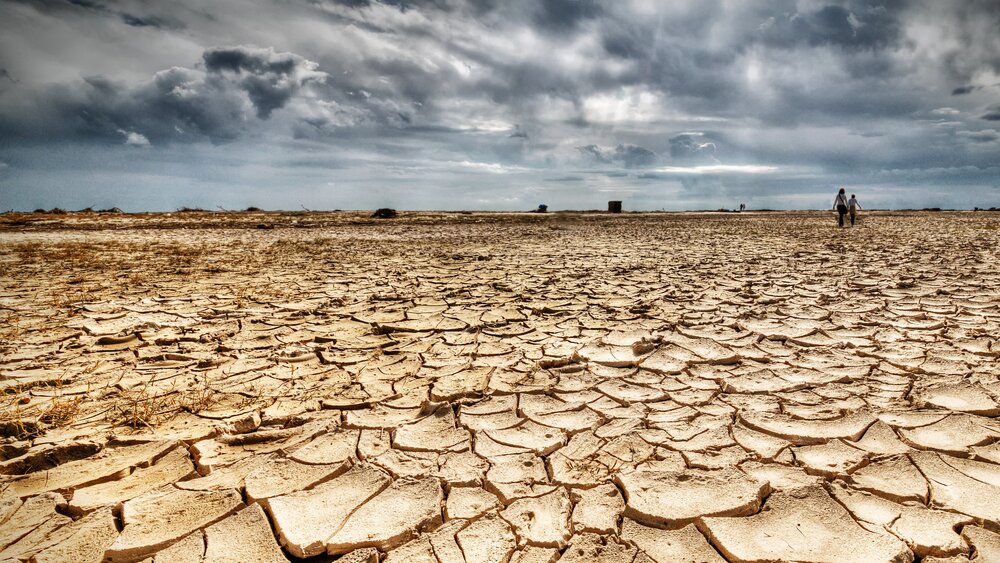Autumn rains likely to start later than normal

TEHRAN – Autumnal rainfall this year is likely to start later than normal in the country, hence the drought period will be prolonged, Ahad Vazifeh, head of the national center for drought and crisis management, has said.
Since the beginning of the current water year (September 23, 2020), the whole country received 130 millimeters of rain over the last month, showing that precipitation has declined by 40 percent compared to the long-term average, he explained.
Pointing out that almost all the provinces are facing a serious decrease in rainfall, he specified “provinces of Hormozgan, Sistan-Baluchestan, Fars, Kerman, Khorasan Razavi, and South Khorasan, are short of rain by 50 to 85 percent. On the other hand, the western and southwestern provinces of Kordestan, Kermanshah, Ilam, Lorestan, and Chaharmahal-Bakhtiari are noticeably facing rainfall shortages.”
For example, the normal annual rainfall in Kermanshah province is 480 mm, but this province has received only 50 percent of its annual rainfall, he said, ISNA reported on Tuesday.
According to the World Meteorological Organization's multiannual forecast, in the next five years, Iran’s average rainfall will decline by 75 percent, and the temperature rises by 50-75 percent compared to the long-term average.“The western and southwestern provinces are the springs of Iran, as receive about 700 mm of rainfall annually, which is a significant part of the country's annual rainfall, but unfortunately the situation is not good during the current water year,” he lamented.
Referring to many provinces dealing with the water crisis, especially southern provinces such as Khuzestan, he said that the country received snowfall lower than normal during winter with above normal temperature. As a result, snow reserves and river flows decreased compared to last year.
“According to the Ministry of Energy, the reserves of dams in the country are not in a good condition and in some areas, the water level has decreased by about 40 percent compared to last year.
So, the water flow is not sufficient in the country's wetlands and lakes. However, there is a need for officials to use all methods of water resources management to tackle the issue. Summer cultivation should also be stopped in the provinces. And People should also save the most,” he emphasized.
Scorching summer ahead
Stating that the temperature during spring (beginning on March 21) was about two to three degrees higher than the long-term average of the country, he predicted that the temperature in summer will still be higher than in the long run, but the temperature anomaly will be higher in the western half of Iran.
So that the temperature in provinces such as Kordestan, West Azarbaijan, East Azarbaijan, Zanjan, etc. will be about one to two degrees Celsius higher than the long-term average.
He pointed out that the temperature in the southern slopes of Alborz, including Tehran, is forecasted to be about 1 to 1.5 degrees Celsius higher than normal during the summer, adding that the southeastern province of Sistan-Baluchestan will also experience normal temperature.
More drought predicted over next 5 years
According to the World Meteorological Organization's multiannual forecast, in the next five years, Iran’s average rainfall will decline by 75 percent, and the temperature rises by 50-75 percent compared to the long-term average.
Accordingly, the adoption of national policies to adapt to low rainfall and reduce the consequences of drought is inevitable, and the Seventh Development Plan should be prepared on the basis of drought and climate change, Vazifeh said in May.
A large part of the country has been hit by severe drought during the past 12 months. Forecasts indicate that we will not have significant rainfall in the remaining months of the current water year, so that, we face severe to very severe drought in most parts of the country, he stated.
What would be the consequences?
Climate change is a fact that cannot be run over, whether the temperature raises over 2 or 6°C, natural incidents such as flooding, droughts, and severe storms are among the main consequences of climate change.
Moreover, water and food shortages, water-borne illnesses, cold or heat-related deaths will come up as the results of temperature variations; in tropical areas also the risk of floods will raise.
Heavy rain and other extreme weather events will become more frequent, which can lead to floods along with decreasing water quality, but also decreasing availability of water resources in some regions.
Climate change will also bring extreme wet and dry seasons, which mainly causes rainfall fluctuations and water scarcity. While there have been prolonged droughts nationwide in past recent years leaving people scrambling for water.
So, nations must take steps to reduce greenhouse gas emissions in the future, preventing the emissions peak, otherwise, they might not be able to breathe on the planet in the future, or migrate to other places if found.
The study may also come efficient when it comes to making the people aware of climate change impact in their own city, within their lifetime, to avoid experiencing an entirely new climate that is beyond human experience.
FB/MG
